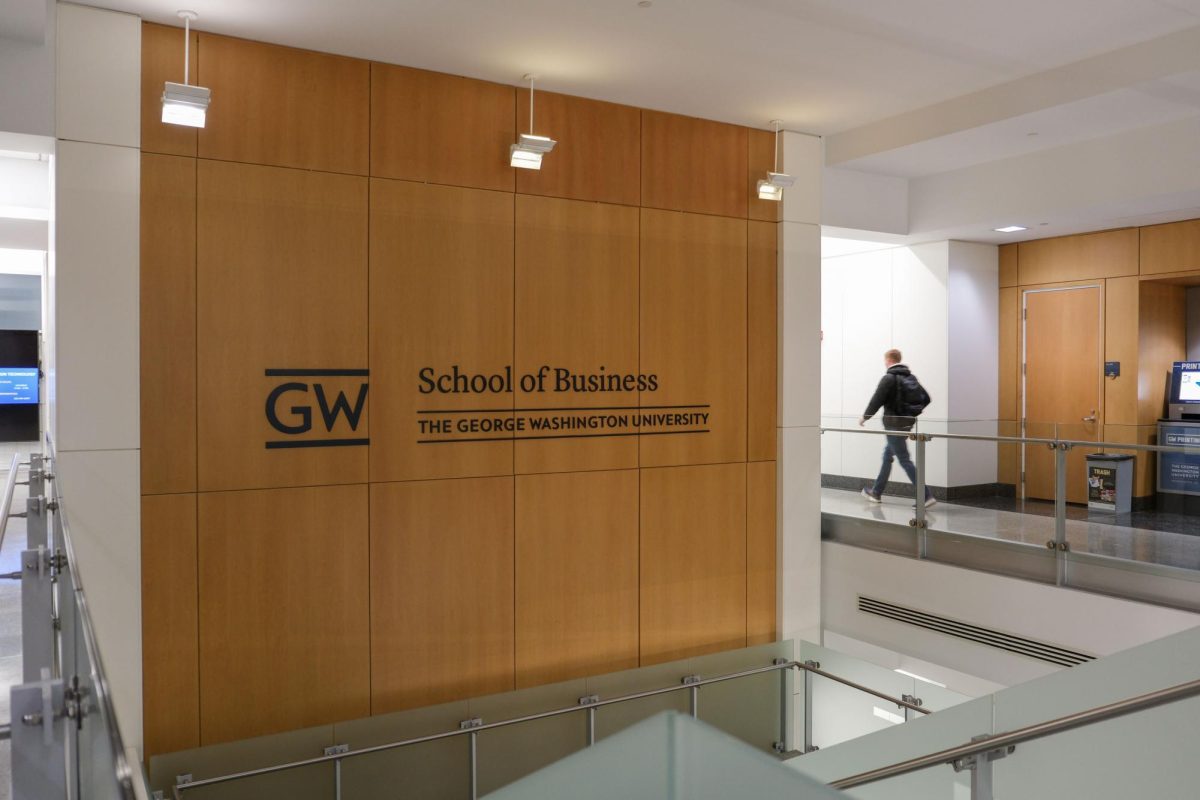The Indian Student Association sponsored a spectacle of music and dancing Saturday night in honor of Holi, the Indian festival of color and spring celebrated after a full moon every March. The three-hour event included 12 separate dance performances in a packed Lisner Auditorium.
ISA members said they offered free admission to the event, a change from past years, to boost attendance and encourage donations to an Indian earthquake relief fund. GW gave the group a reduced rate to rent Lisner.
ISA President Rishi Desai opened the program with a few remarks about Holi and a moment of silence for the victims of a 7.9 magnitude earthquake near Ahmadabad, India.
Groups from American University, University of Maryland and the Guru Nanak Foundation of American performed along with GW dancers. ISA members Anisha Dua and Nandu Machiraju emceed the event.
The performances included a mix of traditional Indian music and dancing combined with current rap and pop-inspired presentations, including two Michael Jackson impersonations.
The Guru Nanak Foundation of America performed the last dance, called Nachda Punjab. Eight male dancers, clad in elaborate yellow and black costumes, incorporated many exciting moves into their routine – at one point forming a human pyramid. The upbeat aura of the dance, combined with lively music and bright colors, captured the essence of the Holi festival.
Color is central to the festival, symbolizing energy, vitality and a passion for life. There are many customs associated with Holi, including the preparation and creation of special foods and clothing for the occasion. The colors represent the earth’s change from winter bleakness to the brilliance of spring.
SA President-elect and ISA member Roger Kapoor thanked students at the event for supporting him through his campaign and through the post-election court battles.
After intermission, guest speaker Arsh Vidya Gurukulam discussed the tragic earthquake in India and described efforts to aid injured victims and families of people who died in the disaster. Donations helped fund construction of a new hospital and much-needed food and medical supplies to the area.
ISA members said a large donation from University President Stephen Joel Trachtenberg, along with Program Board, Student Association and Residence Hall Association contributions allowed the event to be free of charge.
“If people pay for the ticket, they’re much less inclined to donate further,” Desai said.
“It was great of President Trachtenberg to co-sponsor the event,” said ISA member sophomore Raj Parekh.
In a letter to The Hatchet, Trachtenberg expressed disappointment in the ISA’s decision not to charge for the event. The donation Trachtenberg, made, he wrote, was to allow the ISA to use revenue from admission prices for the earthquake relief fund. Desai said the decision to hold a free event was made before Trachtenberg’s donation.
Although he was not directly involved in the exchange with Trachtenberg Parekh said he was not aware of any arrangements to charge admission.
“Maybe there was some miscommunication,” he said. “The fact that it was free enabled more turnout. People were definitely encouraged to donate more.”
Desai said he hoped cutting the admission fee would encourage donations to the relief fund that were collected throughout the evening.
“It was a great gesture by the ISA to put this event on for free in order to get more donations to aid the earthquake victims in India,” said junior Rupa Sekhar, an ISA member.
Desai said the free admission likely drew a larger number of attendees, “at least double” the number from the previous year, he said.
“We also did a good push for the earthquake, and that was the whole purpose of having the show for free,” he said.
Desai said the group raised over $3,000. This year’s free show attracted over 1,100 people, compared to last year’s show, which charged a nominal fee for admission and only attracted 300 people.
“We pulled in a very significant amount of money,” he said. “Probably more than we would have gotten had it not been free.”






